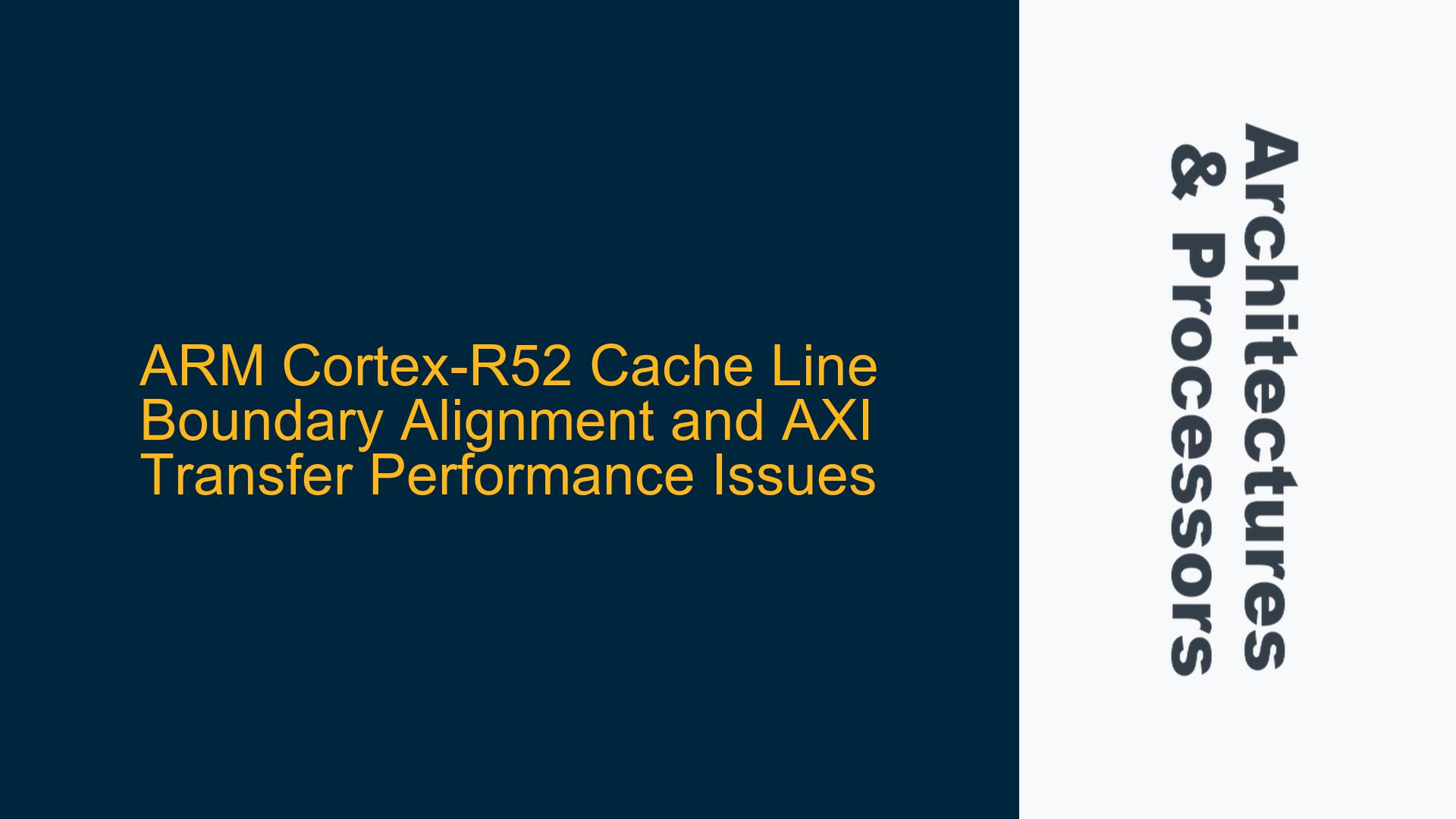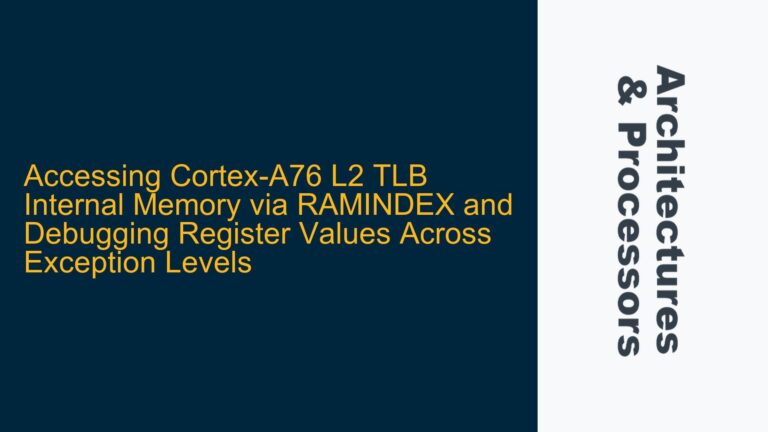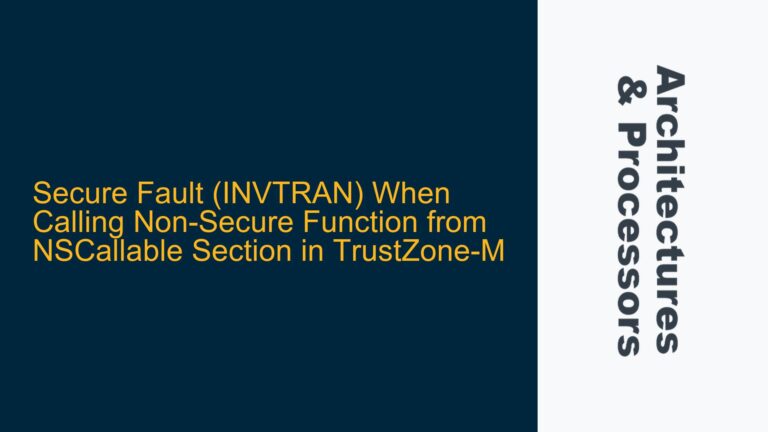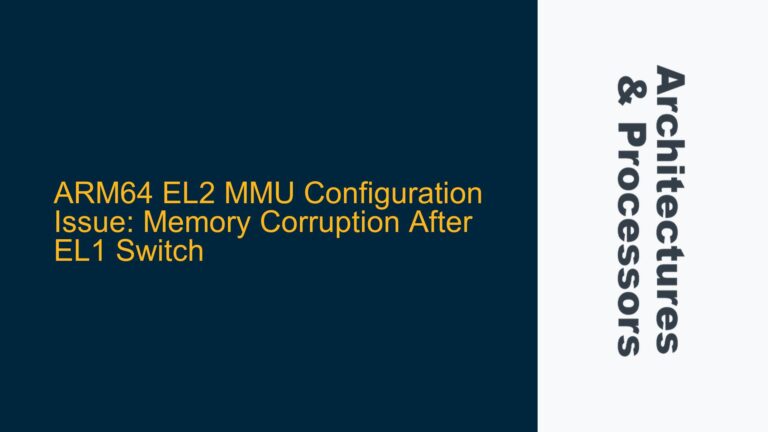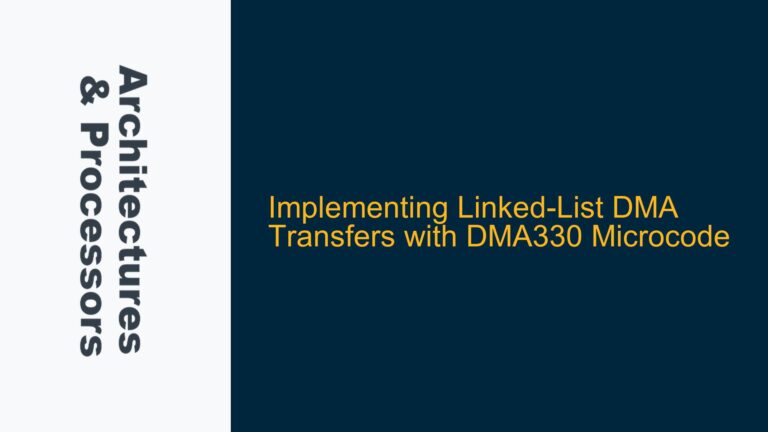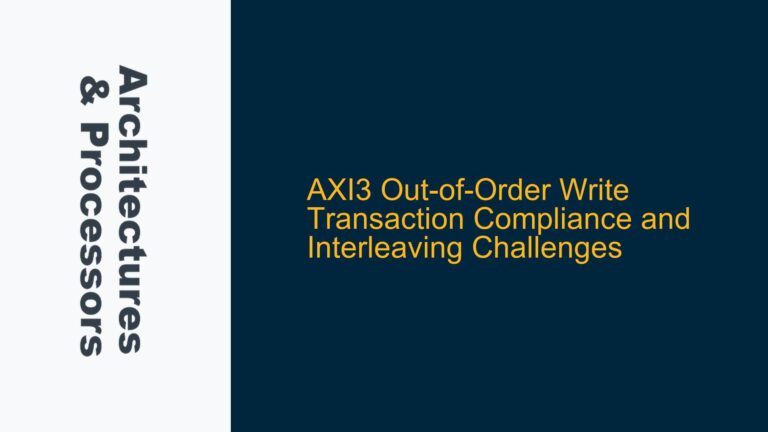Cortex-R52 AXI Transfer Restrictions and Cache Line Boundary Alignment
The ARM Cortex-R52 processor, designed for real-time and safety-critical applications, imposes specific restrictions on AXI (Advanced eXtensible Interface) transfers, particularly concerning cache line boundary alignment. According to the Cortex-R52 Technical Reference Manual (TRM), all WRAP bursts fetch a complete cache line starting with the critical word first, and a burst does not cross a cache line boundary. This restriction is explicitly mentioned in both the AXIM (AXI Master) and flash interface sections of the TRM. The cache line size for the Cortex-R52 is typically 64 bytes, meaning that any AXI transaction must not cross this 64-byte boundary.
When the I-cache (Instruction Cache) is disabled, the performance impact of crossing cache line boundaries becomes more pronounced. This is because the AXI interface may split a single transaction into multiple transfers if the transaction crosses a cache line boundary. For example, if a 32-byte read operation starts at an address that is not aligned to a 64-byte boundary, the AXI interface may issue two separate transfers: one for the portion of the data within the first cache line and another for the portion in the next cache line. This splitting of transactions introduces additional latency, as the AXI interface must handle multiple transfers instead of a single, aligned transfer.
The Cortex-R52’s behavior is consistent with the ARM architecture’s emphasis on efficient memory access patterns. By ensuring that transactions do not cross cache line boundaries, the processor can minimize the number of memory accesses and reduce latency. However, this also means that developers must be aware of these restrictions when designing their software and hardware systems, particularly in scenarios where the I-cache is disabled or where performance is critical.
Memory Access Patterns and AXI Transaction Splitting
The performance degradation observed when transactions cross cache line boundaries can be attributed to the way the Cortex-R52’s AXI interface handles memory accesses. When the I-cache is disabled, the processor relies solely on the AXI interface to fetch instructions and data from memory. In this scenario, the AXI interface must ensure that all transactions are aligned to the cache line boundaries to avoid splitting the transaction into multiple transfers.
For example, consider a 32-byte read operation starting at address 0x1018. Since this address is not aligned to a 64-byte boundary, the AXI interface will split the transaction into two separate transfers: one for the 8 bytes from 0x1018 to 0x101F, and another for the 24 bytes from 0x1020 to 0x1037. This splitting introduces additional latency, as the AXI interface must issue two separate commands and wait for both transfers to complete before the processor can proceed.
In contrast, if the same 32-byte read operation starts at an address aligned to a 64-byte boundary, such as 0x1000, the AXI interface can issue a single transfer for the entire 32-byte block. This results in lower latency and better performance, as the AXI interface only needs to handle one transfer instead of two.
The Cortex-R52’s behavior is particularly relevant in real-time systems, where predictable performance is critical. By understanding the impact of cache line boundary alignment on AXI transactions, developers can optimize their memory access patterns to minimize latency and ensure that their systems meet the required performance targets.
Optimizing AXI Transfers with Cache Line Alignment and Memory Barriers
To mitigate the performance impact of crossing cache line boundaries, developers can take several steps to optimize AXI transfers on the Cortex-R52. The first step is to ensure that all memory accesses are aligned to 64-byte boundaries whenever possible. This can be achieved by carefully designing the memory layout of the application and ensuring that data structures are aligned to cache line boundaries.
In cases where alignment is not possible, developers can use memory barriers to ensure that the AXI interface handles the transactions efficiently. Memory barriers, such as the Data Synchronization Barrier (DSB) and Data Memory Barrier (DMB) instructions, can be used to control the order of memory accesses and ensure that the AXI interface does not split transactions unnecessarily.
For example, consider a scenario where a 32-byte read operation starts at an unaligned address, such as 0x1018. By inserting a DSB instruction before the read operation, the developer can ensure that the AXI interface handles the transaction as efficiently as possible. The DSB instruction forces the processor to wait until all previous memory accesses have completed, which can help to minimize the latency introduced by the split transaction.
In addition to using memory barriers, developers can also optimize their code by enabling the I-cache whenever possible. The I-cache can significantly reduce the number of memory accesses required by the processor, as it stores frequently accessed instructions in a fast, on-chip memory. By enabling the I-cache, developers can reduce the impact of cache line boundary alignment on AXI transactions and improve the overall performance of their systems.
Finally, developers should carefully review the Cortex-R52 TRM and consult with ARM’s technical support team if they encounter any issues with AXI transactions or cache line boundary alignment. The TRM provides detailed information on the processor’s behavior and restrictions, and ARM’s technical support team can provide additional guidance and assistance in optimizing AXI transfers and memory access patterns.
In conclusion, the ARM Cortex-R52’s restrictions on AXI transfers and cache line boundary alignment can have a significant impact on system performance, particularly in scenarios where the I-cache is disabled. By understanding these restrictions and taking steps to optimize memory access patterns, developers can minimize the impact of cache line boundary alignment on AXI transactions and ensure that their systems meet the required performance targets.
